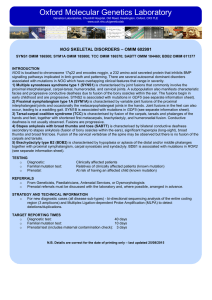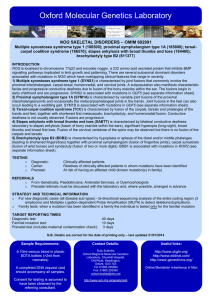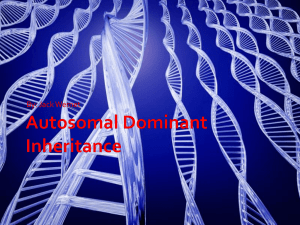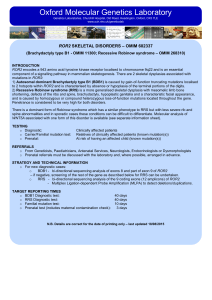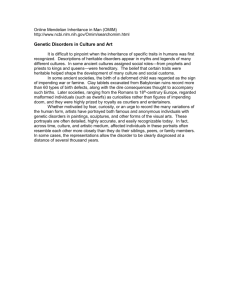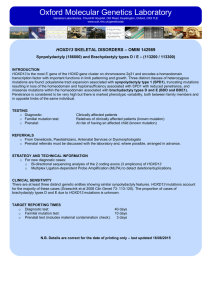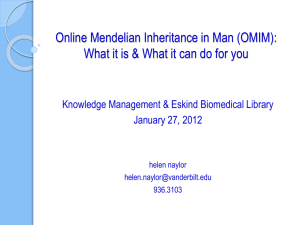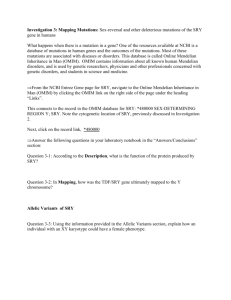GDF5
advertisement
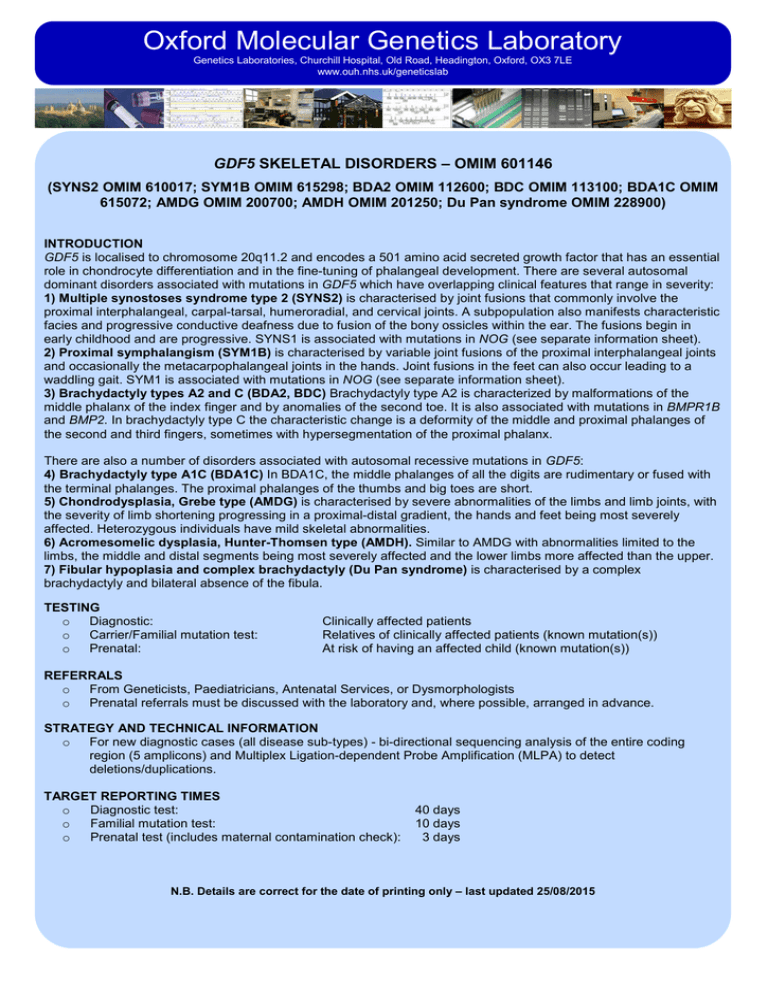
Oxford Molecular Genetics Laboratory Genetics Laboratories, Churchill Hospital, Old Road, Headington, Oxford, OX3 7LE www.ouh.nhs.uk/geneticslab GDF5 SKELETAL DISORDERS – OMIM 601146 (SYNS2 OMIM 610017; SYM1B OMIM 615298; BDA2 OMIM 112600; BDC OMIM 113100; BDA1C OMIM 615072; AMDG OMIM 200700; AMDH OMIM 201250; Du Pan syndrome OMIM 228900) INTRODUCTION GDF5 is localised to chromosome 20q11.2 and encodes a 501 amino acid secreted growth factor that has an essential role in chondrocyte differentiation and in the fine-tuning of phalangeal development. There are several autosomal dominant disorders associated with mutations in GDF5 which have overlapping clinical features that range in severity: 1) Multiple synostoses syndrome type 2 (SYNS2) is characterised by joint fusions that commonly involve the proximal interphalangeal, carpal-tarsal, humeroradial, and cervical joints. A subpopulation also manifests characteristic facies and progressive conductive deafness due to fusion of the bony ossicles within the ear. The fusions begin in early childhood and are progressive. SYNS1 is associated with mutations in NOG (see separate information sheet). 2) Proximal symphalangism (SYM1B) is characterised by variable joint fusions of the proximal interphalangeal joints and occasionally the metacarpophalangeal joints in the hands. Joint fusions in the feet can also occur leading to a waddling gait. SYM1 is associated with mutations in NOG (see separate information sheet). 3) Brachydactyly types A2 and C (BDA2, BDC) Brachydactyly type A2 is characterized by malformations of the middle phalanx of the index finger and by anomalies of the second toe. It is also associated with mutations in BMPR1B and BMP2. In brachydactyly type C the characteristic change is a deformity of the middle and proximal phalanges of the second and third fingers, sometimes with hypersegmentation of the proximal phalanx. There are also a number of disorders associated with autosomal recessive mutations in GDF5: 4) Brachydactyly type A1C (BDA1C) In BDA1C, the middle phalanges of all the digits are rudimentary or fused with the terminal phalanges. The proximal phalanges of the thumbs and big toes are short. 5) Chondrodysplasia, Grebe type (AMDG) is characterised by severe abnormalities of the limbs and limb joints, with the severity of limb shortening progressing in a proximal-distal gradient, the hands and feet being most severely affected. Heterozygous individuals have mild skeletal abnormalities. 6) Acromesomelic dysplasia, Hunter-Thomsen type (AMDH). Similar to AMDG with abnormalities limited to the limbs, the middle and distal segments being most severely affected and the lower limbs more affected than the upper. 7) Fibular hypoplasia and complex brachydactyly (Du Pan syndrome) is characterised by a complex brachydactyly and bilateral absence of the fibula. TESTING o Diagnostic: o Carrier/Familial mutation test: o Prenatal: Clinically affected patients Relatives of clinically affected patients (known mutation(s)) At risk of having an affected child (known mutation(s)) REFERRALS o From Geneticists, Paediatricians, Antenatal Services, or Dysmorphologists o Prenatal referrals must be discussed with the laboratory and, where possible, arranged in advance. STRATEGY AND TECHNICAL INFORMATION o For new diagnostic cases (all disease sub-types) - bi-directional sequencing analysis of the entire coding region (5 amplicons) and Multiplex Ligation-dependent Probe Amplification (MLPA) to detect deletions/duplications. TARGET REPORTING TIMES o Diagnostic test: o Familial mutation test: o Prenatal test (includes maternal contamination check): 40 days 10 days 3 days N.B. Details are correct for the date of printing only – last updated 25/08/2015
